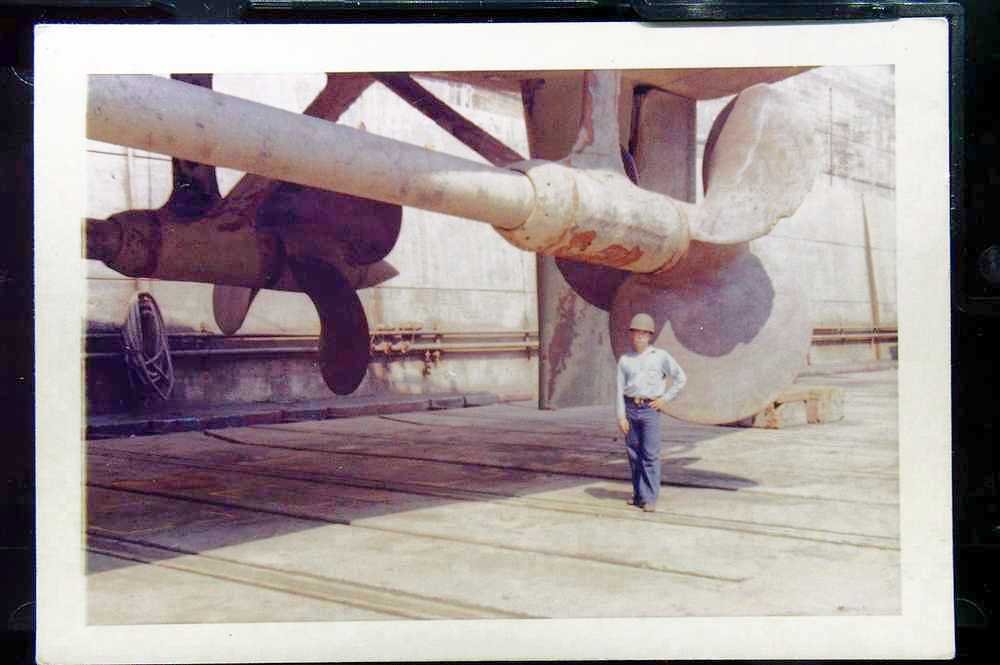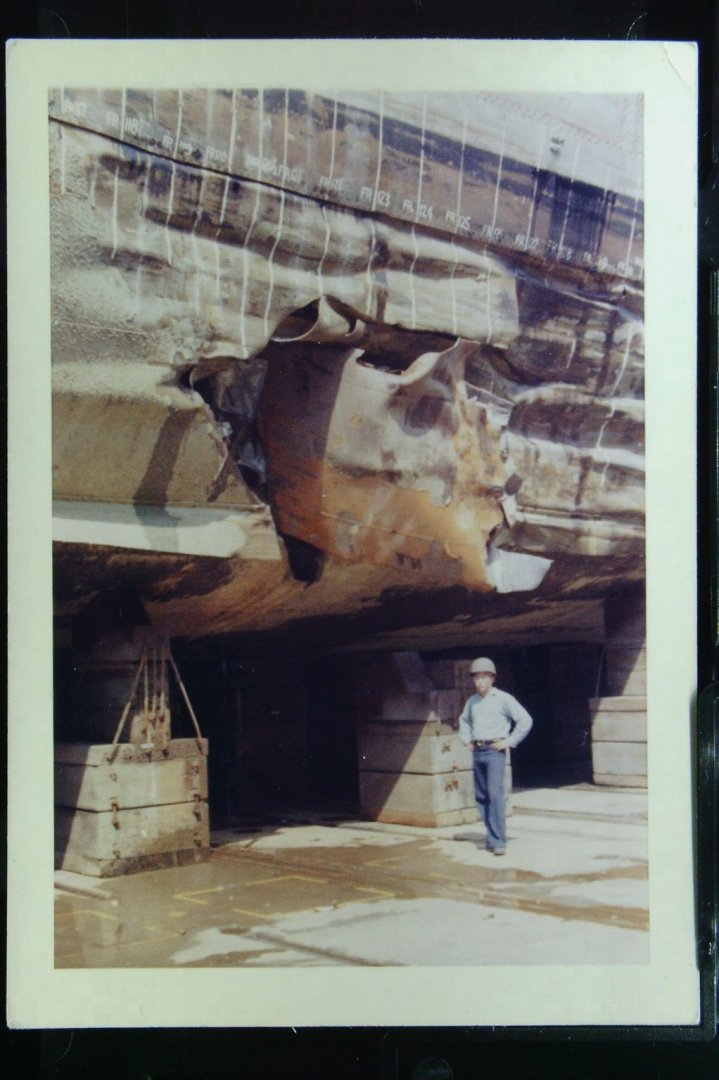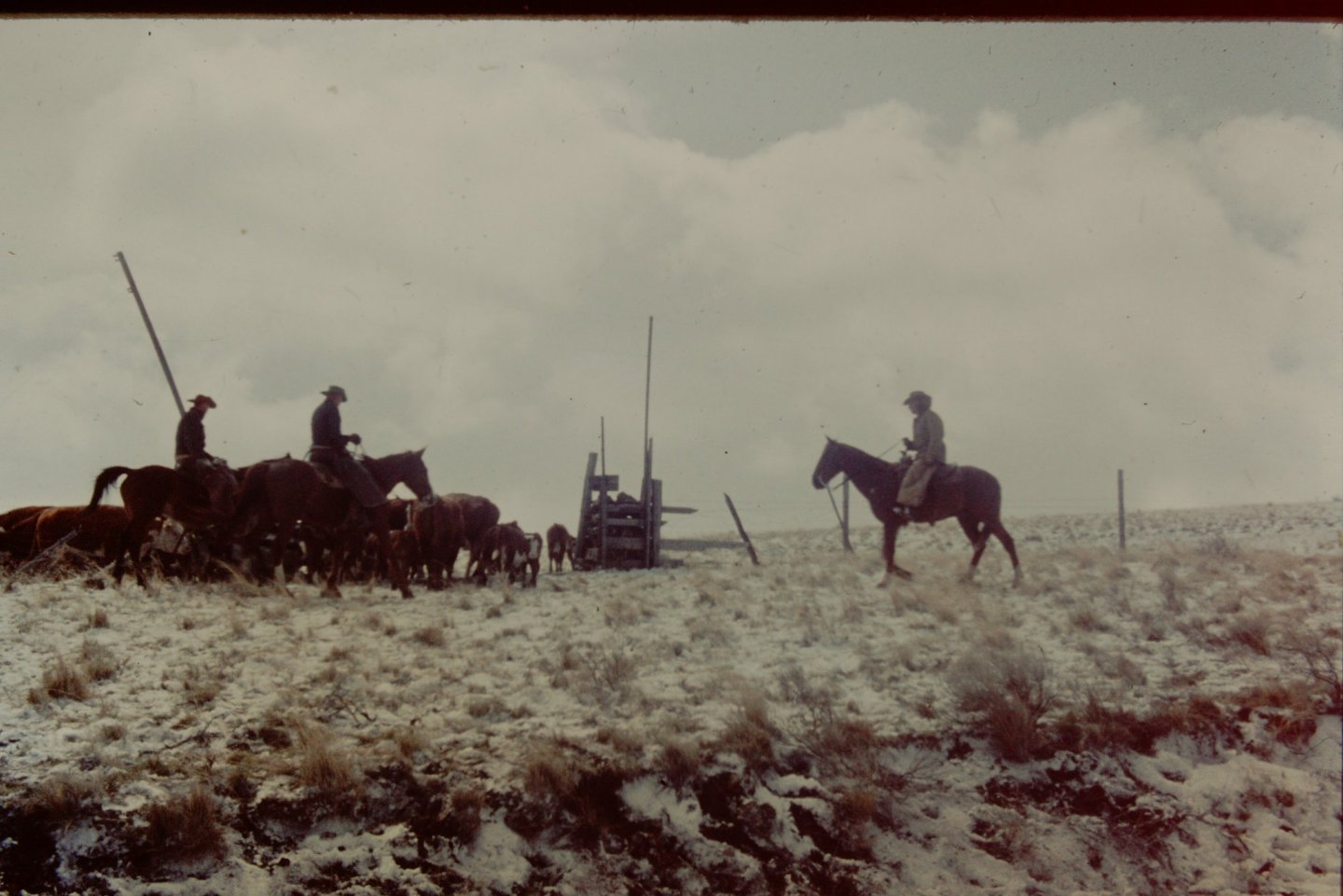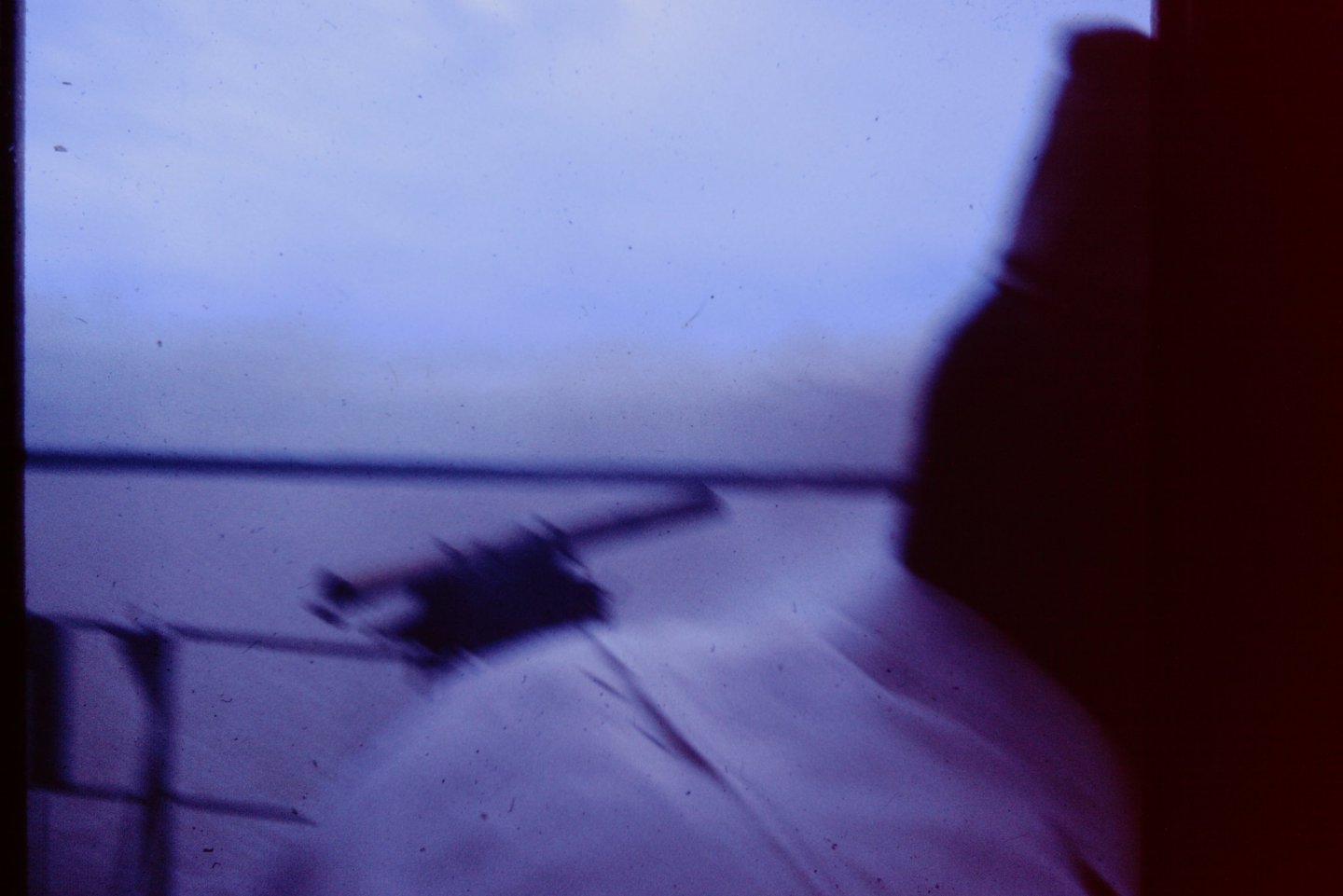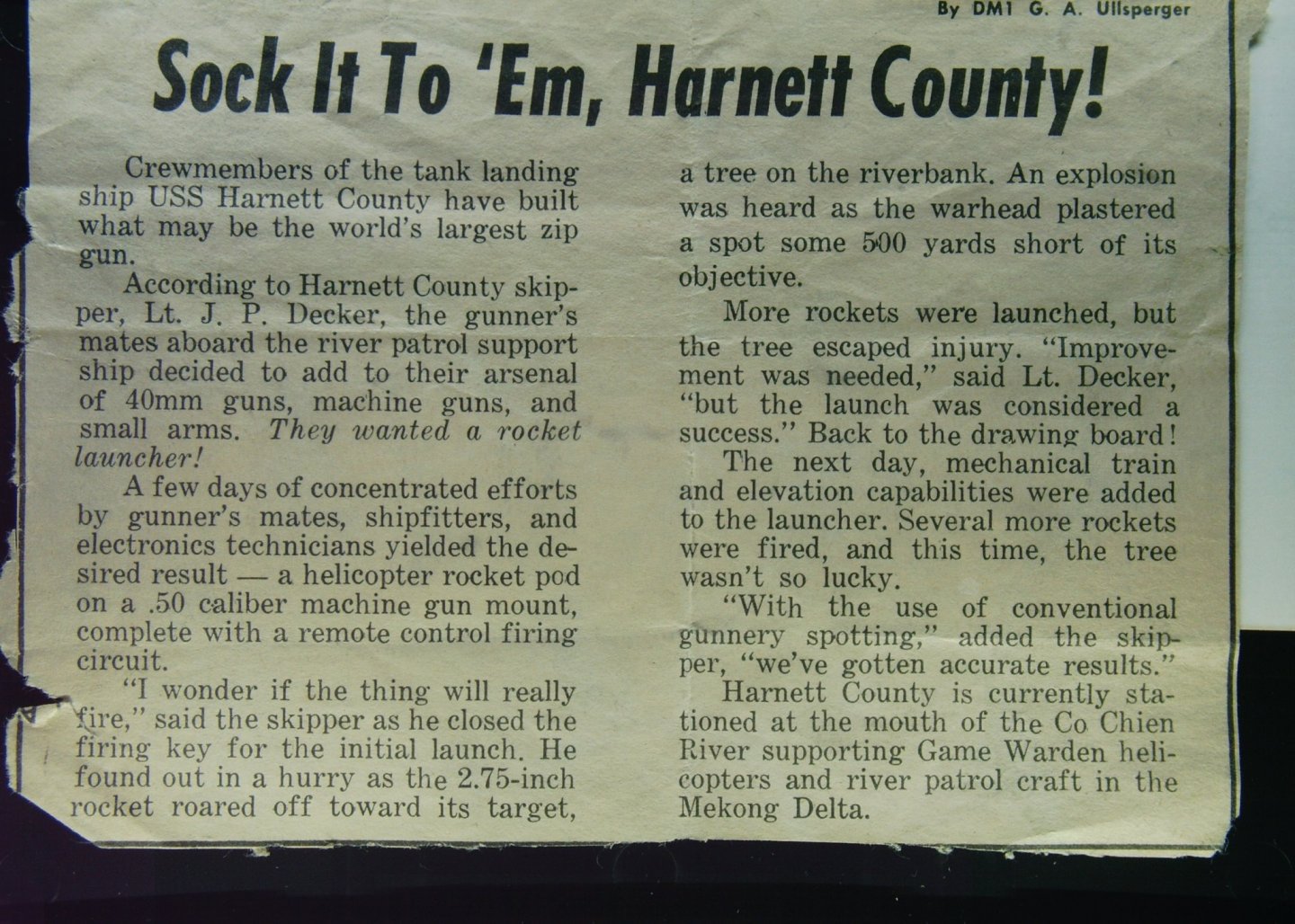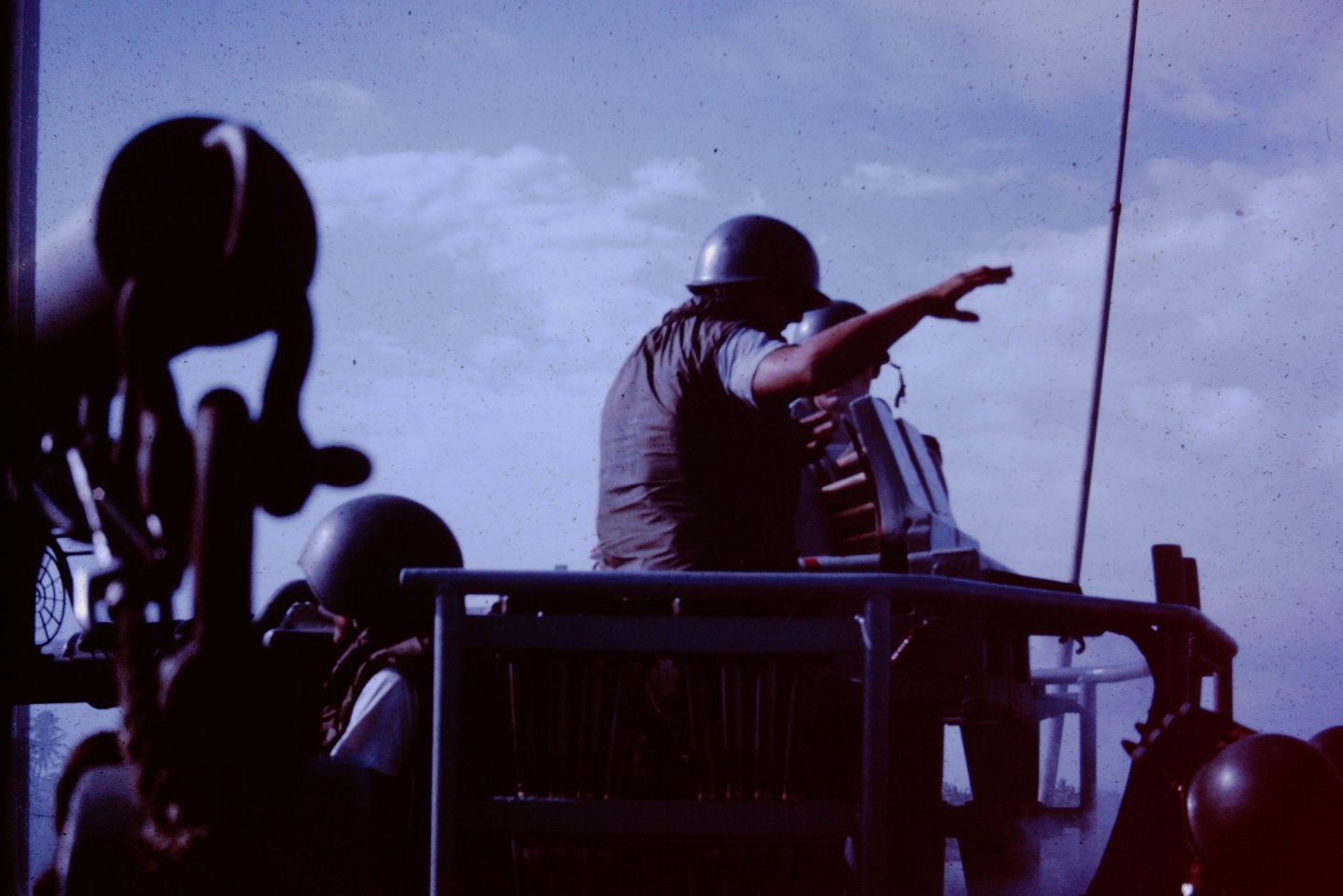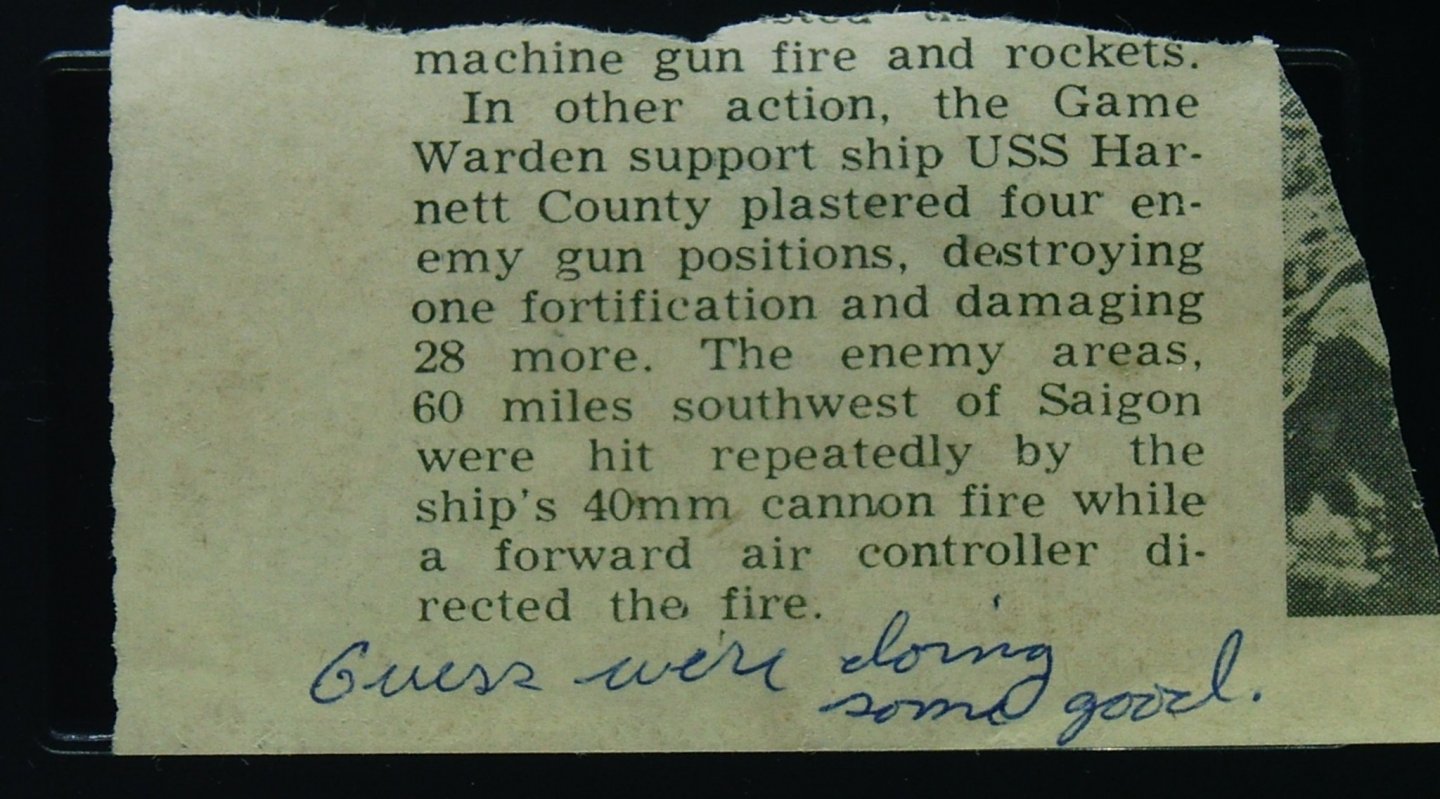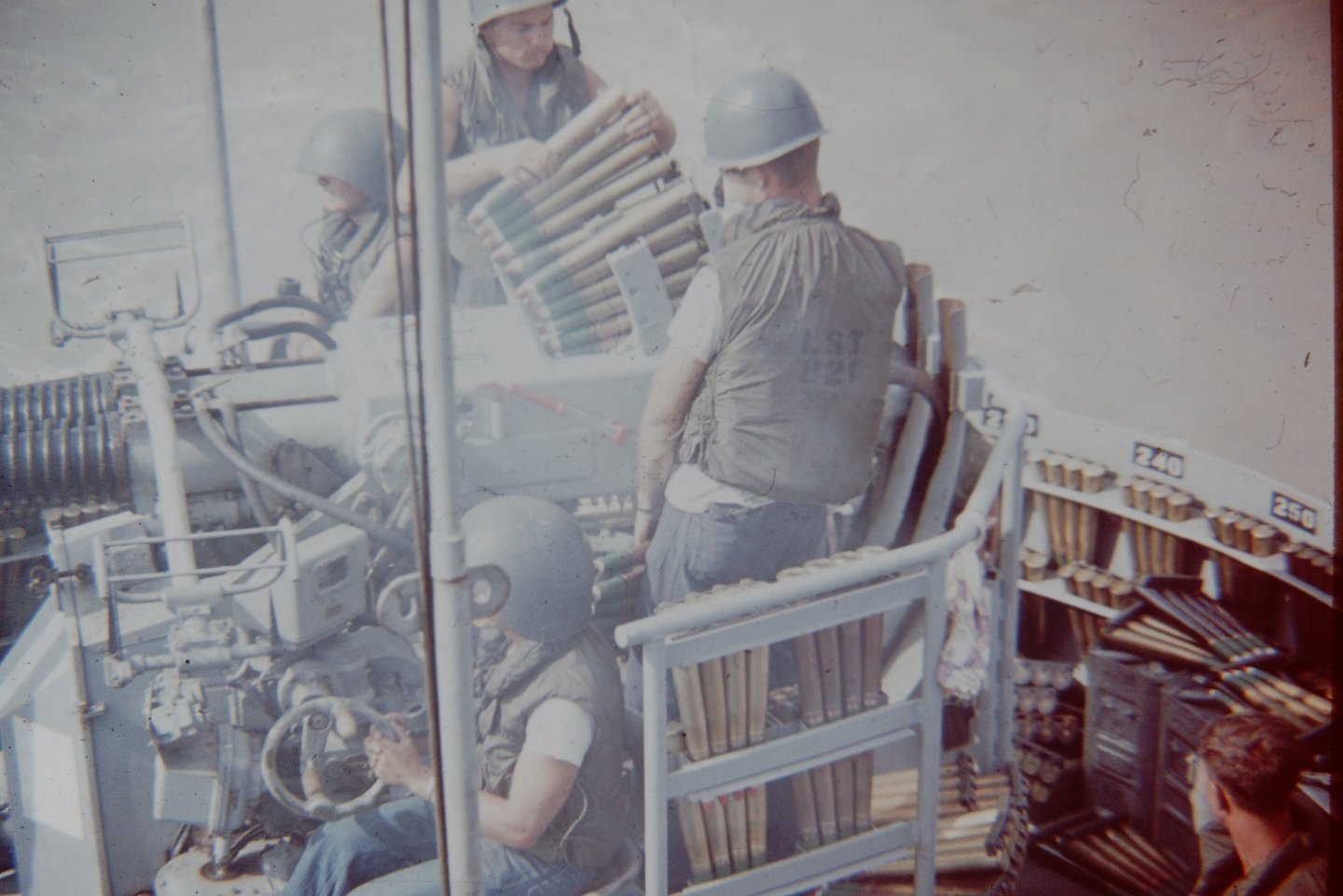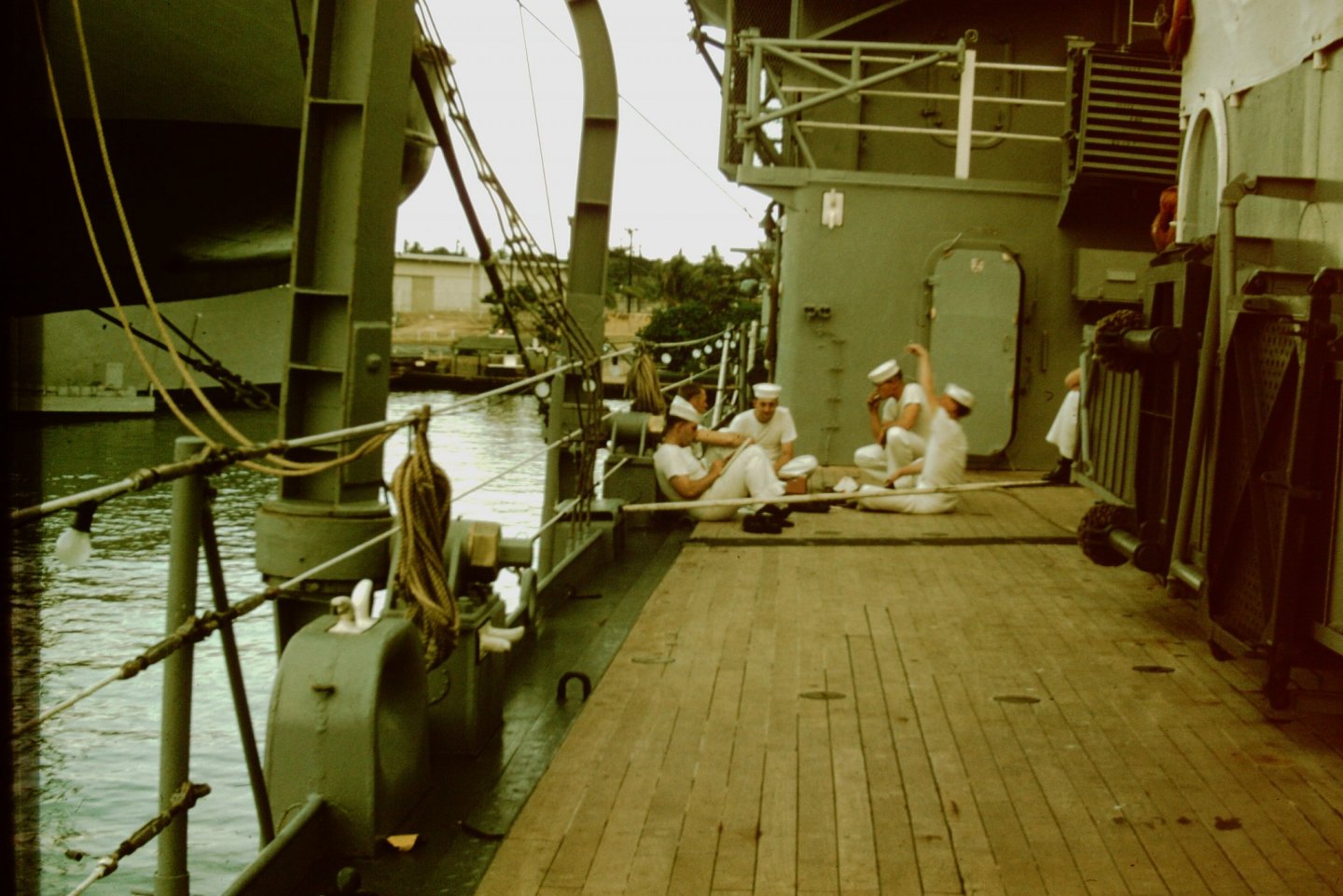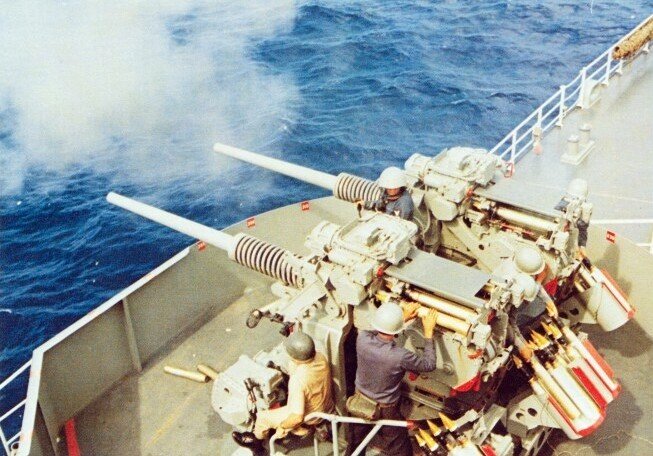-
Posts
1,171 -
Joined
-
Last visited
Content Type
Profiles
Forums
Gallery
Events
Everything posted by jud
-

Making extremely tiny fittings
jud replied to BETAQDAVE's topic in Metal Work, Soldering and Metal Fittings
Might be a good time to look into the Lost Wax method of casting. -
You can see the Seamen with tools in hand doing what appears to be scraping and scrubbing the hull, granted, they may be just taking advantage of the situation. Did that once on the Cape Race, a King Salmon Troller in Alaska. We were short of full size charts and wanted to take a well used chanel as a shortcut, cautiously approached and entered, noticing the chanel had been dredged and the tailings were placed to our Starboard as we going, Skipper got too confident and opened the throttle, I was on the bow watching the water. About half way through, I spotted rocks in our path and let the Skipper know, he throttled down but it was to late, we bounced over a boulder, the heavy keel took the blow and the hull was sound but the hull fitting for the rudder shaft was broken and letting in water, we began a 3 day every two hour bilge pump out and the tailings were now to Port all the way out. Got to town and acquired a new fitting and found a sand beach with pilings used to hold grounded boats, beached her at high tide, secured to the pilings and waited for the tide to go out, one man job on the fitting, so the skipper did that, while I wiped down the hull and applied a new coat of antifouling paint. You may be correct that the careening was done to repair damage, but from what I read, ships on long voyages often careened themselves for cleaning and inspection, rudders were probably inspected and preventive maintenance done during those times.
-
Don't think the patena was removed, it acts as a sealer, marine growth was the problem, it created drag. Here is a photo of the Ammen DD 527 in 1960, she is steel but the color of the dried sea growth is there to see, no seaweed growing so her hull would be considered clean. Screws are damaged from a collision. The photo showing 20 feet of the Colletts bow in our after fire room was on sea trials, with a clean freshly painted bottom.
-

Flickering lanterns
jud replied to James H's topic in Discussion for a Ship's Deck Furniture, Guns, boats and other Fittings
Why do you want flickering lanterns? Even when burning oil in a lamp vessel or a candle, great effort was made to prevent flicker, they used shields and any other thing they could come up with including avoiding placing them in drafts. Walk around with a light source that uses flame, or introduce a draft they all flicker, like today that flicker is annoying unless you are a drugged up hippy. A yellowish flame will produce a very undernourished light, unless an Aladdin type kept pumped up. Ever attempt to fry eggs in a cast iron frying pan in a dark cabin using an oil lamp filled with well aged smoky kerosene on an iron stove after coming in from the barn from catching and feeding your horse for the days work, dull light and dirty chimney but no flicker allowed, except when you moved it from the table trying to get some light into that pan of breakfast? Dim light is good, avoid flicker. -
Thanks wefalck. Page 165 addresses my observation and even mentions the launching of seamen. Figure '6; F', shows that much effort and thought went into preventing that. Think that were I in charge, those windless would have been driven from the front. Suspect that gravity and strong anchor points dictated how the pawls were positioned allowing gravity to be the driving force in their operation. being gravity powered plus the need for working space had more to do with the arrangement than concern about men's back, seems there were many ruptures in those days. Wider drums allowing more sockets for Bars and men would overcome the loss of lifting power over the weight of the men on the bars. My thoughts were based more on the Figure 6 G', with a single Pawl or Dog, a broken bar would provide the speed and force for a single pawl to fail, shortening the free wheeling would help avoid that, as the paper indicates..
-
Often wondered why the load side of the line was led out to the load over the top of most windless's seen on models and some paintings. Man is built to lift more than his own weight if in shape, the load coming off the top of the drum requires the Seamen to pull down if on the opposite side of the load, they can only exert enough force equal to their own weight that way, and would be subject to launch over the top if the equipment failed under load or you teammate's lever broke unexpectedly and the dog failed. Might be a logical reason why so many display the loads being off the top, I haven't been able to find any, and it bothers me, Anyone know the practical reason, could it be that the Winfless's were powered from the load side of the fixture?
-

Making unventable tungsten reinforced masts
jud replied to modeller_masa's topic in Masting, rigging and sails
As metal and wood have different expansion rates during heat changes and the fact that metal is stable in humidity changes but wood is not, I would use a flexible adhesive to allow for that movement. Might even be better to use a loose but close fit to allow for unrestricted reactions to the environment and use no adhesive. Even silicone dries out over time. -
-
-
How does that cast iron do on ceramic top stoves? Used lots of cast iron on electric, gas and wood stoves, bought and used a ceramic top, built in, stove in a house I once owned, never touched it with cast iron so have no experience there. Current electric kitchen stove is nearing replacement time, like cerrmace tops but like the cast iron better. Experience tells me iron and ceramic stove tops would not mix well, is that true with today's ceramics?
-
Mark, they may have been brought out when needed, but blocking the waterways would create problems with drainage and encourage rot along the decks and bottom of the devices. Even pockets cut for individual shot would require drain holes. Suspect that those devices caught the eye of a painter or early model maker and if actually used, they were probably considered gun equipment and brought out with the buckets, rammer's, hand Spikes, powder boxes, etc. to be used when needed and stored because of interference with the waterways and scuppers. On a model depicting ready guns, would probably include them but they would be lashed in place using eyes in the bulwarks for that purpose.
-
If in action, perhaps shot was accumulated and contained in a triangle holder but I doubt it, might stay where put when full if the fit was tight enough to prevent any movement. Pocket cut into the hatch combings, would be more logical during combat. Storing them on a weather deck, regardless of fixture would encourage rust allowing the problems with rust to fun freely, they wern't that dumb. Chasing shot was probably more fun than chasing 8" projectiles around a shell deck that had been released by worn and stretched securing cables held in place by past center cams. Always happened in rough weather when the weather decks were secured preventing going up the Barbette through the tail hatch and into the Turret Officers Booth, then threw the right Gun Room and down into it's Gun Pit, through the hatch to the Upper Powder Handling room and on down another hatch to the Shell Deck where all the racket was coming from. Entering from below it was through the armored Barbette and up a ladder through a non rotating hatch, then up through a rotating hinged deck plate about 2 feet above the non rotating hatch into the shell deck. Risky, had to wait until the roll cleared the hatch of projectiles, then up you went one at a time shutting the hinged deck plate behind you so the projectiles would not fall through that opening as the roll brought them back. Sometimes needed to grab a hold on the overhead fixtures too swing up out of the way. Suspect built in holders were built in for ready service projectiles that were normally empty, unless shooting was expected or an inspection from someone outside the ship was scheduled. I would be making some ready service pockets, leaving them empty and throw those triangles far. Real Life, you do what you need to do to, keep the guns going, so including a boy chasing a cannon ball would not be unseamly. Different ship different times, our built in ready service racks, did not provide enough storage for our needs, Our short handed crews required stockpiling, would not take long to go through all the ammo you see and be stealing more from adjacent unmanned guns. Mt 46, Harnett County LST 821, TF 116, TU 76.8.3, one of 4 LST's assigned to TF 116, 'River Patrol', full time. Those times we did extended firing we acquired an audience, which during several different times of that, that audience,on their own, passed us ammo from nearby unmanned guns.
-

Converting a Backyard Shed into a Model Workshop
jud replied to Hank's topic in Modeling tools and Workshop Equipment
Looks good except I would have built my Model Shop where you put your yard equipment shed and used the building in the back 40, for yard equipment and tools, running 220 out to it would have been done when the 120 was ran. You are getting older and the walk back and forth will be good exercise but soon you will be wanting a half bath and a fridge with counter and deep sink in your shop, the shop here was built with a water heater and shower and used regularly while we were running cows and farming. Don't need to run water now, but would be wise to build with the fixtures in place with it's plumbing or at least frame it in with service water and drainage lines in place, all running to an outside hookup. Don't know if you are on a public sewer system or not, but unless it is deep in the street, flow will probably be by pump or a septic tank and drain field will be required. Because of the expense, might be worth considering switching buildings, so utilities in the house will be close. Whatever you do it will be yours to enjoy and it looks like you are going to end up with a nicely finished building you can call yours. -
The guns of the time you are dealing with, were short ranged, smooth bored, and very inaccurate, requiring ranges to be short for effective results. Modern firearms like to be horizontal because the line of sight needs be in agreement with the bore when aimed especially if sighted in with the line of sight directly above the bore, desired because the force of gravity effects the fall of the shot but not the line of sight, even offset sights are adjusted with the gun horizontal. Those old guns and sights had not been developed to the point where tilting would have effected the fall of the shot enough to be noticed. Typically a gun will not move from recoil forces until the projectile clears the bore, so recoil over a sloped deck will have no effect on the shot, just need to make provisions to let the gun recoil without damage, if it slips down the slope a bit, not a problem, after reloading, run the thing back out and use the hand spikes to correct the position the gun in the port, aim, then touch her off again.
-
I would imagine that the dark hull and the internal heat, that the grip of the ice was not as strong at the contact area of the hull, as a cold dead hull would be. Setting sail would introduce movement in the hull, interfering with a hard trap with the ice and perhaps, that movement might lift the ship a bit higher, reducing the crushing force. Those Old boys were observant and used that characteristic to harvest from their observations any advantage sent their way, in ways we are not even capable of noteing or taking steps to utilize the little things those Old Timers observed. Also looks like they are near open water.Just an observation, based on a life of looking at cause and effect, learned as a survival act because growing up on a Wheat and Cattle Ranch and never taught anything, just told to go do something, needed to figure it out for myself how to do it, might get asked after getting it done, why I had done it that way, because it would have been easier doing it another way which was then explained. So my theory is just that, don't remember reading any reasons for setting sail while trapped in ice.
-

Gun Spile
jud replied to Mark Allen's topic in Discussion for a Ship's Deck Furniture, Guns, boats and other Fittings
Spile used as a stopper and Quoin used to adjust. Resistance to wheel chocks is alive and well. -

Gun Spile
jud replied to Mark Allen's topic in Discussion for a Ship's Deck Furniture, Guns, boats and other Fittings
As one definition of a Spile is a type of stopper, I would expect the term to be used as a stopper, Tampions have been around a long time and are commonly called that, so what needs stopping on a gun or it's carriage, without a commonly used name? Wheels need stopping, few address that need and most ignore the fact that wheels need chocking as the first step in securing a gun for sea as a temporary holder when working on and around them. I would not be surprised if someday I heard that carriage wheels were spiled using Wheel Chocks, would expect them to be of the single side type requiring two or one with the carriage hard against the bulwark's or other ship structural member and a single chock per wheel holding it there. -
Been waiting for someone to let it out of the bag about how Fiber Rope is measured. My 5th edition of the American Merchant Seaman's Manual lists as 12" in circumference as the largest manila rope in their sizing table, its says it is 3 3/4" in diameter, manufactured in 1200 ft coils weighing 5,225 pounds +/-, breaking strength of 102,000 pounds.
-
The Teak Decks aboard the Helena CA 75 were bleached to get them a light color, Boiler Compound, Scouring Powder, Salt Water Soap plus anything else the Boatswain Mates put in it. Modern times so the concoction was mixed in a garbage can with salt water and let sit and age overnite, would eat a Whitehat. That stuff was put down with a swab before the Holy Stoning began, that mix was used about once a month unless we were being bombarded with stack soot, the holy Stoning itself was done once a week and it never bleach anything by itself, carrying the Flag, all had to look good. Once had Mount 32 a 3"50 Dual Purpose Gun located on the Port Side aft of Turret Two on the main deck right outside the Admirals door to his living spaces, had several different Admirals and all were friendly and respectful to us working on that Mount, it was the Junior Officers that gave us fits. Photo a section of our Teak Deck.
-

Need CAD type program
jud replied to Sambini's topic in CAD and 3D Modelling/Drafting Plans with Software
Traverse PC and Generic Cad is what I have used for a very long time, Started out with a COGO on an IBM 1130, writing the program, punching the cards, feeding them into the card reader, waiting for them to reach the machine, monitor the printer as the program ran, tear off the printed sheet, recover the punch cards, debug and run it again, magic it was. We even acquired a drum plotter that printed all diagonal lines like a stair step, what a wonderful machine Punch Cards on an IBM 1130. The programs I first noted work for me and I have owned them a long time. You are getting some good ideas above, I stick to what I have, it is paid for and I am familiar with it, follow the above advice. Whatever you choose, it will be obsolete soon along with the software and data storage media, Store important stuff on acid free paper, you will be able to read it in 10 years, I expect a huge hardware change soon, it is past due.
About us
Modelshipworld - Advancing Ship Modeling through Research
SSL Secured
Your security is important for us so this Website is SSL-Secured
NRG Mailing Address
Nautical Research Guild
237 South Lincoln Street
Westmont IL, 60559-1917
Model Ship World ® and the MSW logo are Registered Trademarks, and belong to the Nautical Research Guild (United States Patent and Trademark Office: No. 6,929,264 & No. 6,929,274, registered Dec. 20, 2022)
Helpful Links
About the NRG
If you enjoy building ship models that are historically accurate as well as beautiful, then The Nautical Research Guild (NRG) is just right for you.
The Guild is a non-profit educational organization whose mission is to “Advance Ship Modeling Through Research”. We provide support to our members in their efforts to raise the quality of their model ships.
The Nautical Research Guild has published our world-renowned quarterly magazine, The Nautical Research Journal, since 1955. The pages of the Journal are full of articles by accomplished ship modelers who show you how they create those exquisite details on their models, and by maritime historians who show you the correct details to build. The Journal is available in both print and digital editions. Go to the NRG web site (www.thenrg.org) to download a complimentary digital copy of the Journal. The NRG also publishes plan sets, books and compilations of back issues of the Journal and the former Ships in Scale and Model Ship Builder magazines.



